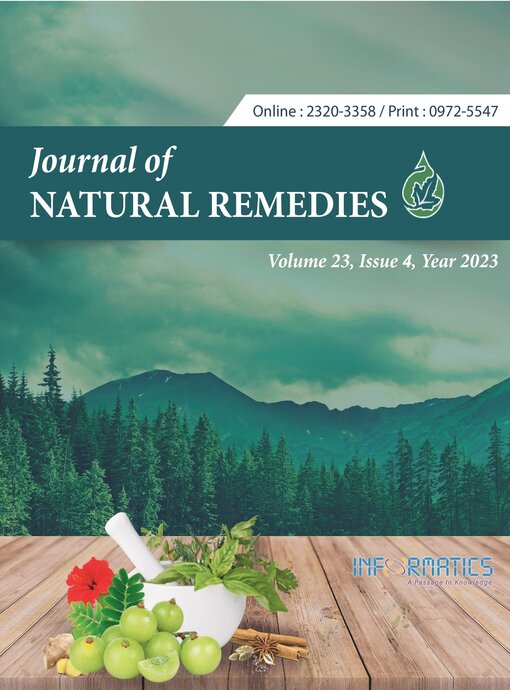An Ayurvedic Intervention for Subconjunctival Hemorrhage (SCH) Resulting in Early Alleviation of Disease — A Case Report
DOI:
https://doi.org/10.18311/jnr/2023/34449Keywords:
Aschyotana, Netramritam Eye Drop, Photophobia, Subconjunctival HaemorrhageAbstract
Introduction: Subconjunctival Hemorrhage (SCH) is a common condition of the eye that has distinct characteristic features, such as the acute appearance of a sharply circumscribed redness of bleeding underneath the conjunctiva in the absence of discharge, and inflammation in the affected areas, which is painless. We are now disclosing a case of subconjunctival bleeding caused by local minor trauma and eye rubbing. This case was unique as the healing time, which was usually 1 to 2 weeks, was reduced to 5 days after the intervention of ayurvedic formulations. Case Presentation: A 60-year-old man who had redness in his left eye for one day came to the OPD setting. Redness and inflammation were present, as shown by direct clinical questioning. Later, a clinical examination confirmed both symptoms. A subconjunctival hemorrhage was confirmed by the way the eye appeared. Conclusion: Subconjunctival hemorrhage may exhibit signs of other conditions that pose a risk to the eyes. To make a distinction between those causes and localized subconjunctival hemorrhage, a clinical assessment was necessary.
Downloads
Metrics
Downloads
Published
How to Cite
Issue
Section
License
Copyright (c) 2022 Madhav Madhukar, Pallavi Jagtap, Mayur Shiralkar (Author)

This work is licensed under a Creative Commons Attribution 4.0 International License.
Accepted 2023-09-14
Published 2023-11-09
References
Tarian B, Kiratli H. Subconjunctival hemorrhage: Risk factors and potential. Clinical Ophthalmology. 2013; 7:1163-1170. DOI: https://doi.org/10.2147/OPTH.S35062
Mimura T, Yamagami S, Usui T, Funatsu H, Noma H, Honda N, et al. Location and extent of subconjunctival hemorrhage. Ophthalmologica. 2010; 224(2):90-95. https://doi.org/10.1159/000235798 DOI: https://doi.org/10.1159/000235798
Fukuyama J, Hayasaka S, Yamada K, Setogawa T. Causes of subconjunctival hemorrhage. Ophthalmologica. 1990; 200(2):63-7. https://doi.org/10.1159/000310079 DOI: https://doi.org/10.1159/000310079
Mimura T, Usui T, Yamagami S, Funatsu H, Noma H, Honda N, et al. Recent causes of subconjunctival hemorrhage. Ophthalmologica. 2010; 224(3):133-137. https://doi.org/10.1159/000236038 DOI: https://doi.org/10.1159/000236038
Cugini C, Iannone A, Bartolini A, Fiore T, Fierro T, Gresele P. Reasons for visits to an emergency center and hemostatic alterations in patients with recurrent spontaneous subconjunctival hemorrhage. European Journal of Ophthalmology. 2016; 26(2):188-192. https://doi.org/10.5301/ejo.5000692 DOI: https://doi.org/10.5301/ejo.5000692
Mimura T, Yamagami S, Mori M, Funatsu H, Usui T, Noma H, Amano S. Contact lens-induced subconjunctival hemorrhage. American Journal of Ophthalmology. 2010; 150(5):656-665. https://doi.org/10.1016/j.ajo.2010.05.028 DOI: https://doi.org/10.1016/j.ajo.2010.05.028
Liu W, Li H, Qiao J, Tian T, An L, Xing X, et al. The tear film characteristics of spontaneous subconjunctival hemorrhage patients were detected by Schirmer Test I and tear interferometry. Molecular Vision. 2012; 18:1952-1954.
King AB, Walsh FB. Trauma to the head with particular reference to the ocular signs; injuries involving the hemispheres and brain stem; miscellaneous conditions; diagnostic principles; treatment. American Journal of Ophthalmology. 1949; 32(3):379-398. https://doi.org/10.1016/0002-9394(49)91931-5 DOI: https://doi.org/10.1016/0002-9394(49)91931-5
Kittisupamongkol W. Blood pressure in subconjunctival hemorrhage. Ophthalmologica. 2010; 224(5):332. https://doi.org/10.1159/000313835 DOI: https://doi.org/10.1159/000313835
Pitts JF, Jardine AG, Murray SB, Barker NH. Spontaneous subconjunctival hemorrhage–A sign of hypertension? British Journal of Ophthalmology. 1992; 76(5):297-299. https://doi.org/10.1136/bjo.76.5.297 DOI: https://doi.org/10.1136/bjo.76.5.297
Bodack MI. A warfarin-induced subconjunctival hemorrhage. Optometry. 2007; 78(3):113-8. https://doi.org/10.1016/j.optm.2006.10.015 DOI: https://doi.org/10.1016/j.optm.2006.10.015
Doshi R, Noohani T. Subconjunctival Hemorrhage. [Updated 2023 Feb 20]. In: StatPearls [Internet]. Treasure Island (FL): StatPearls Publishing; 2023.
Available from: http://www.energy.sk/info/menux2055x.asp
Available from: www.amrit-veda.com
Kumar S, Dwivedi KN. A brief review on medicinal property of vasa (Adhatoda vasica Linn Nees) from kosha and nighantus. 2019. Available from: https://www.researchgate.net/publication/332012649_A_BRIEF_REVIEW_ON_MEDICINAL_PROPERTY_OF_VASA_ADHATODA_VASICA_LINN_NEES_FROM_KOSHA_AND_NIGHANTUS
Rawat N, Roushan R. Guduchi; A potential drug in Ayurveda. https://www.researchgate.net/publication/331087814_GUDUCHI_A_POTENTIAL_DRUG_IN_AYURVEDA
API (Ayurvedic Pharmacopeia of India) vol-1 page-161, vol-1 page-53, vol-2 page-132, vol-3 page-149.
Vikas G, Pagoch SS. Phytopharmacological review of Trichosanthes dioica (Patola). International Ayurvedic Medical Journal. 2014; 2(3):322-337.
Peterson CT, Denniston K, Chopra D. Therapeutic uses of Triphala in Ayurvedic medicine. Journal of Alternative and Complementary. 2017; 23(8):607-614. DOI: https://doi.org/10.1089/acm.2017.0083

 Madhav Madhukar
Madhav Madhukar









 0.35
0.35 24
24 0.161
0.161